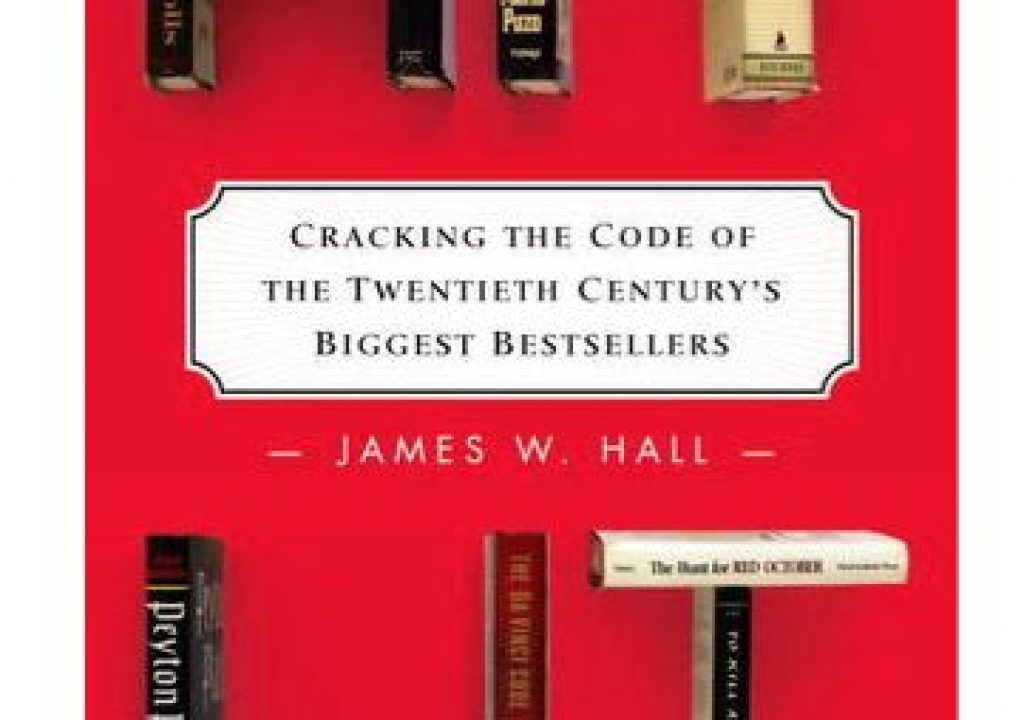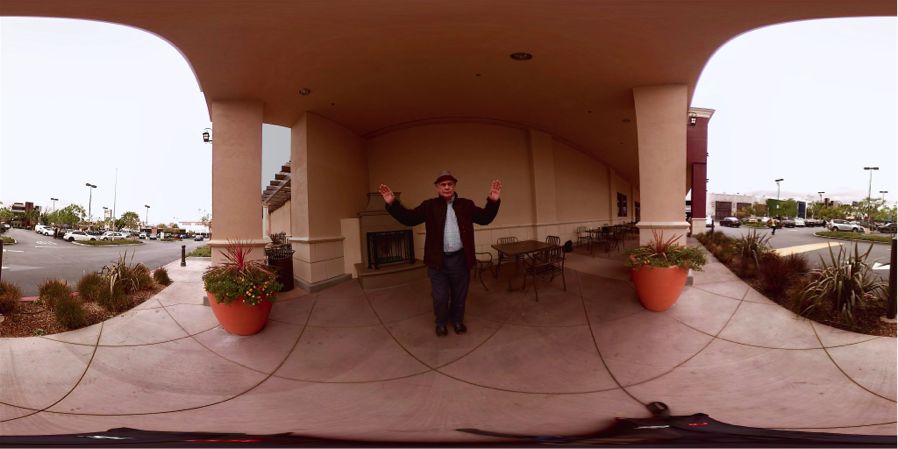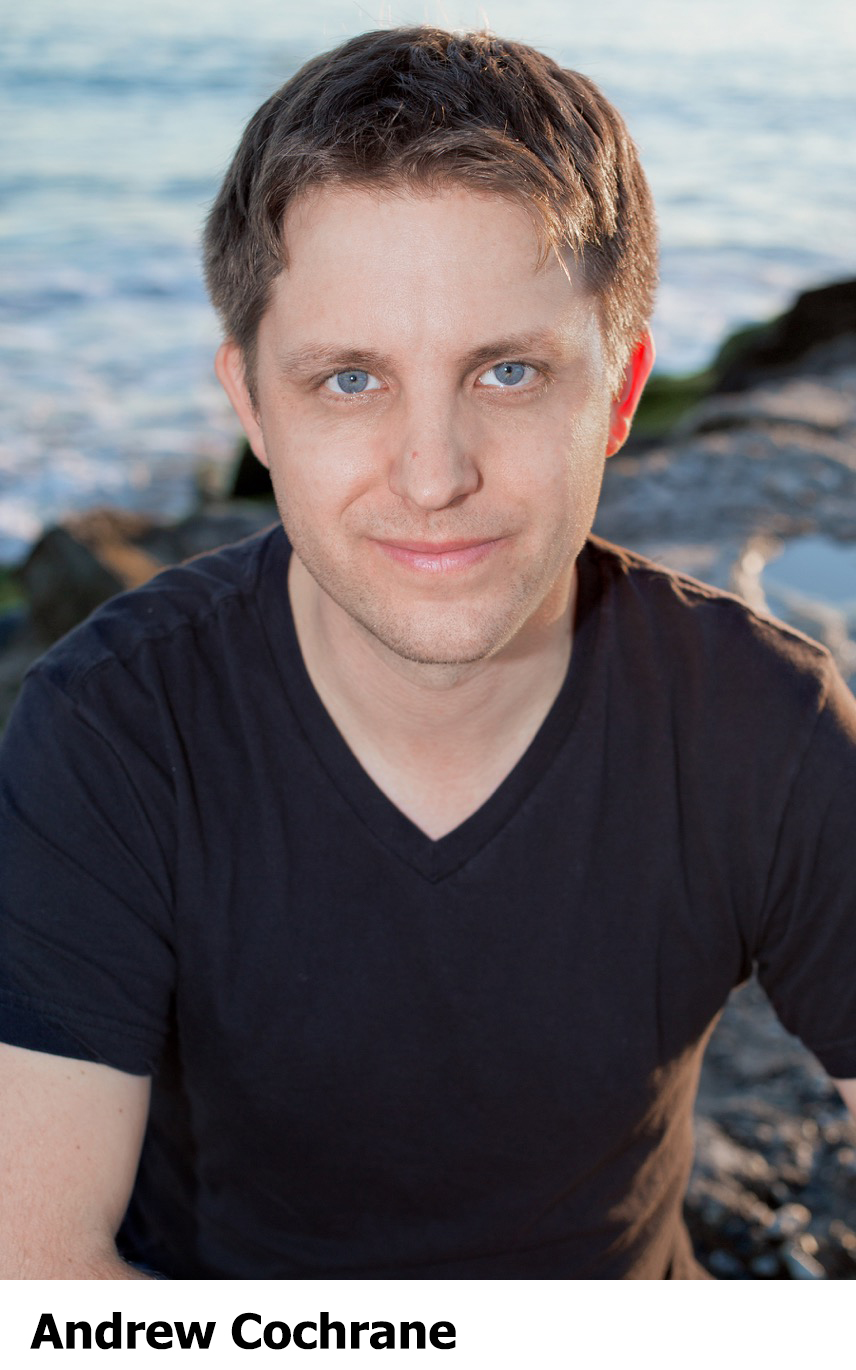Sustainable, Evergreen Storyworlds
I was asked to give a 'transmedia talk' at London Book Fair this year and it posed me with a problem. I've been talking 'transmedia' to publishers for nearly 8 years and I figured it was time for a change.
Let's talk about story instead.
Rather than talk generically for an hour on expanding a story across territories, timelines and audiences I decided to frame my talk around a book I've been reading and enjoying – Hit Lit – Cracking The Code of The Twentieth Century's Biggest Bestsellers. As I've been more closely researching and questioning story structure, narrative design, fragmented narratives and audience behaviors around story experiences, I came across this book which suggests that there are key motifs or features that exist within bestselling stories.
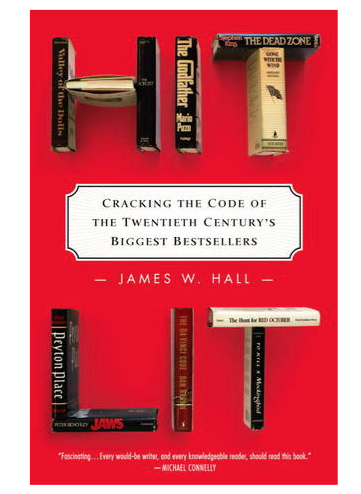
Intrigued that there might be a ‘code’, it presented itself as a ‘must-read’.
In it, creative writing professor and thriller writer, James W Hall consults Alice Payne Hackett, the leading authority on which books sold the most through the 20th Century and identifies 12 novels that are bestsellers based on a tight criteria – not so much because of the ‘velocity’ of sales, but sustained sales over time.
He has identified key motifs, or features, in all 12 of these bestsellers, many of which echoed components that suggest suitability for a story world, (along with opportunities to look at these components when building storyworld opportunities):
- THE GOLDEN COUNTRY (storyworld)
- HOT BUTTONS (themes & beats)
- THE BIG PICTURE (characters & timelines)
- NOTHING BUT THE FACTS, MA'AM (authenticity and opportunities for interaction)
- SECRET SOCIETIES (opportunities for immersion and gameplay)
- BUMPKINS VERSUS SLICKERS (the heroes journey)
- A DOZEN MAVERICKS ('Jack Sparrow' personalities and independent thinkers)
- RELIGION
- FRACTURED FAMILIES (real-life problems, the rise of the under-dog or triumph over adversity)
- THE JUICY PARTS
The 12 books selected are:
- The Godfather, 1969 – (12,140,000 sold)
- The Exorcist, 1971
- To Kill a Mockingbird, 1960
- Peyton Place, 1956
- Valley of the Dolls, 1966
- Jaws, 1974
- Gone With the Wind, 1936
- The Bridges of Madison County, 1992
- The Dead Zone, 1979
- The Hunt for Red October, 1984
- The Firm, 1991
- The Da Vinci Code, 2003
and it immediately struck me how many of these had been further retold in movie form.
So to look at some of these 12 features a little closer:
- THE BIG PICTURE – James W Hall references “colossal characters doing magnificent things on a sweeping stage” and “a small story told against a sweeping backdrop – that's the pattern repeating again and again in the most successful bestsellers“
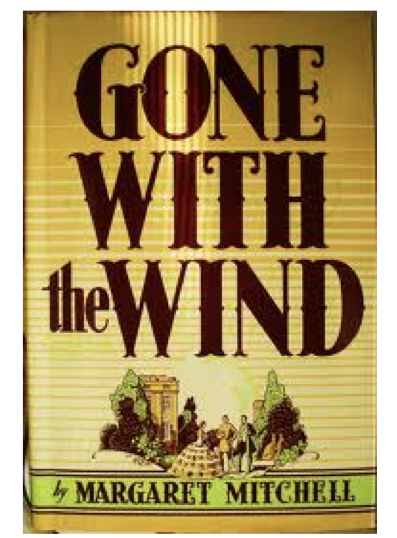
Gone With The Wind spans two storyworld locations, splitting time between Atlanta and Tara.
Peyton Place gives short and crucial glimpses of Manhattan although most of the novel takes place in the semi-rural town of the title, while To Kill a Mockingbird takes us on long wallow in backwater America with brief references to the great cities beyond it’s limits.
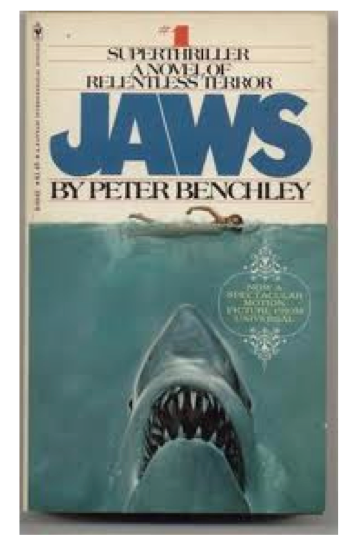
In Jaws, the carefree island of Amity is only half a days drive from avenues of Manhattan
and the population are known as ‘summer folk’ and winter folk’
which you could perhaps substitute for ‘city’ and ‘country’.
The storyworld is build around an isolated sanctuary that they rent out for part of each year.
Their economy depends on annual migration of tourists – but before throngs arrive
we get a glimpse of the island in its natural state and the
author plays out one ‘world’ against the other to give dimension and depth.
- NOTHING BUT THE FACTS, MA'AM – “An abundance of facts and information, including everything from etiquette to the nuts-and-bolts layout of a sub-marine, fills these 12 books. The didactic function is as old as the novel form itself and continues to be a chief attraction in bestselling novels.”
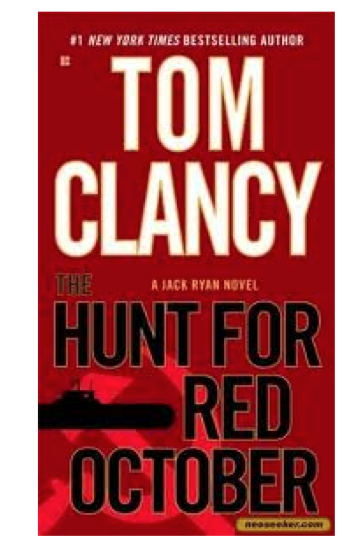
Stuffed full of facts about submarines, governmental agencies and protocol.
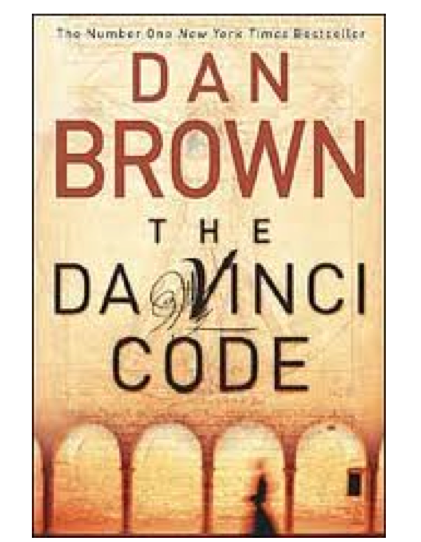
On opening the covers of The Da Vinci Code an avalanche of post-it notes spills out,
as well as file cards, and a clutter of short essays along with jottings about the Louvre,
riffs on goddesses and feminism, the Hebrew alphabet, the Depository Bank of Zurich.
- SECRET SOCIETIES – “All twelve of these bestsellers expose the inner workings of at least one secret society”.
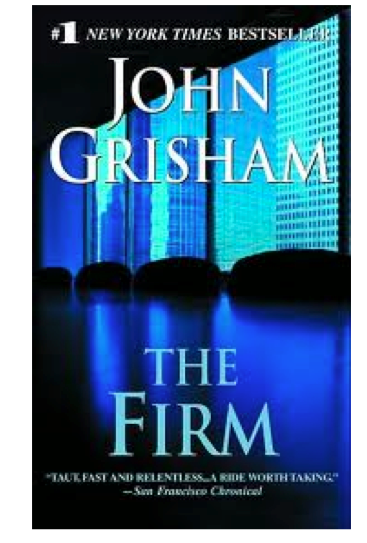
The Firm revealed an unvarnished story of the inner workings of high-powered law firms.
A behind the scenes scoop.
- BUMPKINS VERSUS SLICKERS – All have a central character that sets off on journey – mostly in opposite direction – from city to countryside or reverse. Journeys of this type have mythical echoes as old as Epic of Gilgamesh and in a contemporary era the same structureal underpinnings are at work from Star Wars to The Wizard of Oz – a character is called to adventure. After initially refusing the call, that character is galvanized into ation by an event and leaves the safety of their ordinary world, eventualy reaching a perilous place that Vogler calls “the inmost cave”.
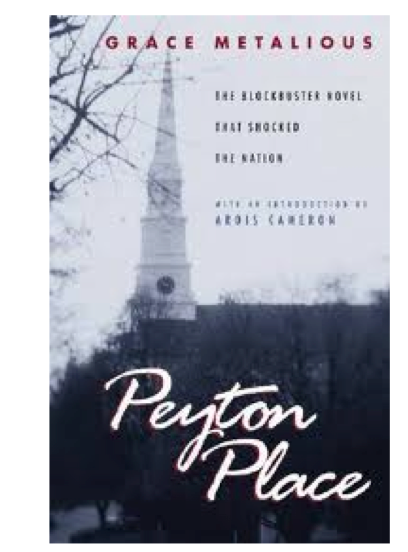
So we have country girls in City in Peyton Place and City Boys in Country in The Firm.
- RELIGION – All 12 feature religion in prominent ways, consistently critiquing orthodox religious practices and the dangers of zealotry and take a look at faith and doubt, outing hypocrisy, secularism, supernatural calculus, along with the power of blasphemy.
- A DOZEN MAVERICKS – The heros/heroines of these 12 bestsellers are all rebels, loners, misfits or mavericks. Mavericks are fabulous instigators and protagonists – Huck Finn realises he is a maverick because of his refusal to fit in with his spinster aunt Sally, in Top Gun Tom Cruise, plays a fighter jet pilot who takes the same handle as his nickname. Creating tension between mavericks and conventionalists operates at the core of great storyworlds, from Harry Potter, Wizard of Oz, Star Wars and Narnia to Star Trek.
- FRACTURED FAMILIES – In each of the 12 novels a member of a broken family finds an ingenious way to transcend their crazy stress. These novels represent families under economic stress, at emotional war, splitting apart, with a missing parent, dealing with disease, death, infidelity, job stress or life-threatening danger. All of these 12 bestsellers heroes/heroines are on a journey to eventually find ways to make peace with their extreme losses.
- THE JUICY PARTS – in every one of these stories, one key sexual encounter plays a decisive role in the outcome of the plot and in the transformation of the protagonist. From Princess Leia in Star Wars, the tension as we waited for Harry Potter to fall for Hermione Granger and now The Great & Powerful Oz reveals to us the witches story and the Wizard of Oz – The Great & Powerful Oz now gives us the story of thwarted love and bitter revenge. Twilight dealt with the power of forbidden love, The Firm, The Dead Zone and Jaws touched on cheating and how these moments come back to haunt them, whilst Bridges of Madison County deal with the topic of sexual awakening.
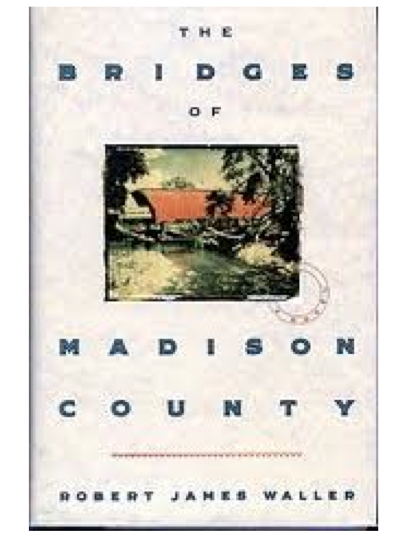
More than a story with a strong theme of sexual awakening and ‘what could have been’, Robert Kincaid and Francesca Johnson characters are woven around the dramatic tension of the secret society of adultery. The timeline and storytelling reveals both of their lives prior to meeting, but doesn't waste time on showing them.
A recurring tension that forces the characters to beat the clock is common in most of these 12 bestsellers, and is also resonant in these blockbusters & bestsellers:

Hit Lit is by no means a comprehensive look at what makes a great storyworld, an evergreen property nor is a template to ensure a bestseller or a blockbuster, but it is worth a read – especially if you're interested in the mechanics and architecture of the building blocks of story.

Filmtools
Filmmakers go-to destination for pre-production, production & post production equipment!
Shop Now